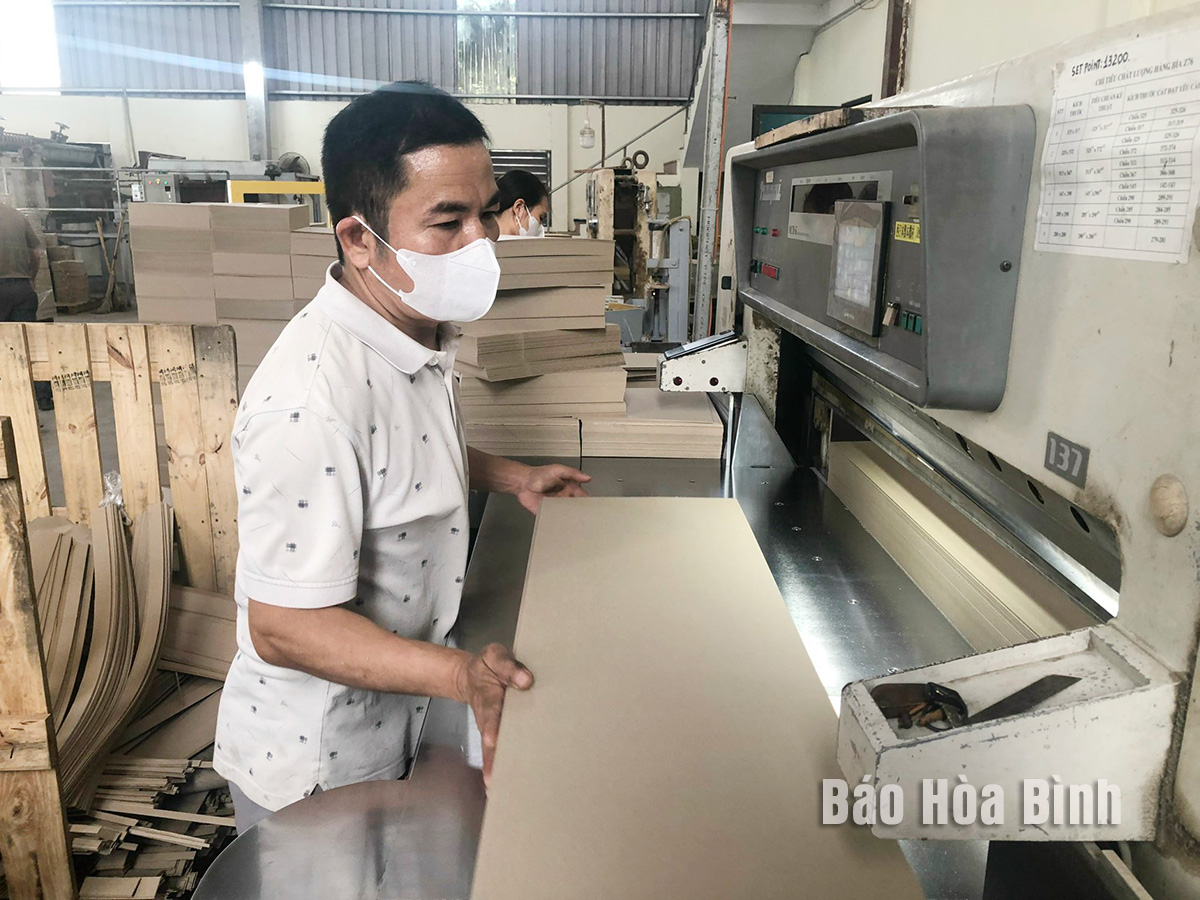



Dong Do Paper and Packaging Company, Lien Son commune, Luong Son district, creates jobs for many local workers.
Dong Do Paper and Packaging Company specialises in producing paper and carton board. It was officially put into operation in 2008 in Dong Suong village, Lien Son commune, Luong Son district.
With an annual output of tens of tonnes of finished products of all kinds, the company earns about 30 billion VND (1.2 million USD) a year. It has created stable jobs for over 40 local workers with an average monthly income of 7 million VND.
Nguyen Dinh Trung, Director of the company, said over the past time, the company has received timely and regular supports of local authorities in completing investment administrative procedures, developing material area and human resources supply, among others.
So far, the locality has had 40 quarrying enterprises, 22 producing baked and unbaked bricks, three producing cement, eight mining, 150 enterprises and cooperatives producing other products, and 597 households working in handicrafts.
In addition, Luong Son industrial park currently has 39 enterprises operating in production and business, creating jobs for over 13, 000 employees.
The district is developing Nhuan Trach industrial park with a total area of over 213 hectares and Nam Luong Son industrial park and two industrial clusters to attract investment.
Dinh Van Loi, head of Economic and Infrastructure Department of Luong Son district, said in an attempt to promote industrial strengths, the district has been implementing solutions to improve investment, business environment, and competitiveness in the locality. In particular, the district will focus on calling on and actively supporting investors in the areas of clean, high-tech, and high-value-added industries.
In the coming time, the district will continue to promote investment in industrial clusters and build infrastructure of industrial zones and clusters to meet the needs of enterprises while promoting the improvement of transport and electricity system infrastructure to serve the production by enterprises, he added.